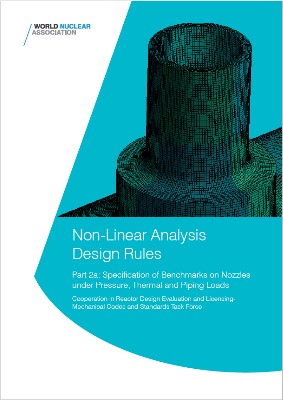Non-Linear Analysis Design Rules Part 2a
In September 2014, the CORDEL MCSTF Pilot Project was launched to investigate divergences and to promote international convergence of code requirements for non-linear analysis methods.
Major Design rules in pressure vessel and piping codes, nuclear and non-nuclear, are based on the linear elastic method associated with the classification of stresses into primary stress, secondary stress, and peak stress on the surface. This approach is only easy to develop for simple cases, such as cylindrical shell under axisymmetric quasi-static loads. For more complex geometries and load combinations, the stress classification methodologies available are complicated to implement, highly conservative and dependent on the user’s approach. Such difficulties are regularly encountered when designing and assessing nuclear power plant components, such as a vessel nozzle under complex piping loads or piping systems.
Consequently, non-linear analysis at design level is an efficient alternative to the basic linear elastic approach, using real material behaviour and more accurate deformation criteria. One of the major benefits is to remove the issue of the classification into primary versus secondary stress associated with elastic analysis.
Following the publication of Non-Linear Analysis Design rules; Part 1: Code comparison. This report Part 2a, specifies two benchmarks for non-linear analysis of nozzles under pressure, thermal and piping loads.
The results of the benchmarks will be soon published in Part 2b. After presenting the results, the CORDEL MCSTF will publish “Non-Linear Analysis Design Rules: Part 3: Good practices”, which will present recommended practices in non-linear analysis methodologies.
